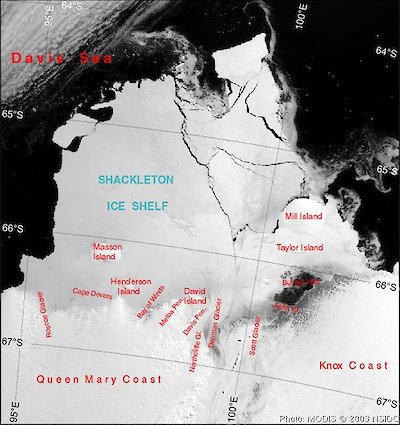Floating fortresses
Antarctic ice shelves are like nothing else on earth. Their seaward edges are vast, imposing cliffs of ice. The biggest of these ‘ice barriers’ stand as much as 50 metres above sea level and descend many times that distance below the sea surface to their base. Source of the world’s biggest icebergs, Antarctic ice shelves are the largest pieces of floating ice on the planet.
Ice shelves are the seaward extension of the Antarctic ice sheet — the ‘estuaries’ of vast glacial streams that move steadily down from the continent’s centre to the coast. These virtually-level platforms together make up more than a tenth of Antarctica’s surface area, about the size of France, Spain and Italy combined.
They look permanent, and have existed for many thousands of years, but ice shelves are constantly changing as they gain ice from the hinterland or lose it to the sea, often in the form of Antarctica’s characteristic flat-topped giant icebergs. In recent times some Antarctic ice shelves have disintegrated and disappeared, victims of warming atmosphere and ocean.
Shackleton Ice Shelf is a prominent feature of the coast of East Antarctica around the 100°E meridian of longitude. Extending for hundreds of kilometres along the coast, it has been measured at nearly 34,000 square kilometres, about half the area of Tasmania, though it appears to be smaller today than in Mawson’s time.
Today’s Russian station of Mirny is about 100 kilometres west of Shackleton Ice Shelf. Towards its eastern end, about 250 kilometres from the AAE’s Western Base, is a region of low, rocky coastal hills, now known as Bunger Hills, discovered in 1912 by Alexander Kennedy, a member of Frank Wild’s party. Further east about 450 kilometres is the Australian station of Casey.

